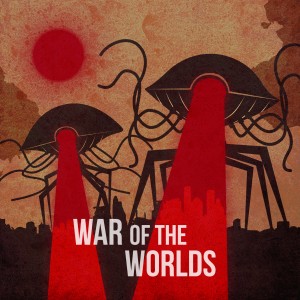War of the Worlds
On Sunday, October 30, 1938, millions of radio listeners were shocked when radio news alerts announced the arrival of Martians. They panicked when they learned of the Martians’ ferocious and seemingly unstoppable attack on Earth. Many ran out of their homes screaming while others packed up their cars and fled.
Though what the radio listeners heard was a portion of Orson Welles’ adaptation of the well-known book, War of the Worlds by H. G. Wells, many of the listeners believed what they heard on the radio was real.
The Idea
Before the era of T.V., people sat in front of their radios and listened to music, news reports, plays and various other programs for entertainment. In 1938, the most popular radio program was the “Chase and Sanborn Hour” which aired on Sunday evenings at 8 p.m. The star of the show was ventriloquist Edgar Bergen and his dummy Charlie McCarthy.
Unfortunately for the Mercury group, headed by dramatist Orson Welles, their show, “Mercury Theatre on the Air,” aired on another station at the very same time as the popular “Chase and Sanborn Hour.” Welles, of course, tried to think of ways to increase his audience, hoping to take away listeners from the “Chase and Sanborn Hour.”
For the Mercury group’s Halloween show that was to air on October 30, 1938, Welles decided to adapt H. G. Wells’s well-known novel, War of the Worlds, to radio. Radio adaptations and plays up to this point had often seemed rudimentary and awkward. Instead of lots of pages as in a book or through visual and auditory presentations as in a play, radio programs could only be heard (not seen) and were limited to a short period of time (often an hour, including commercials).
Thus, Orson Welles had one of his writers, Howard Koch, rewrite the story of War of the Worlds. With multiple revisions by Welles, the script transformed the novel into a radio play. Besides shortening the story, they also updated it by changing the location and time from Victorian England to present day New England. These changes reinvigorated the story, making it more personal for the listeners.
The Broadcast
On Sunday, October 30, 1938 at 8 p.m., the broadcast began when an announcer came on the air and said, “The Columbia Broadcasting System and its affiliated stations present Orson Welles and the Mercury Theatre on the Air in The War of the Worlds by H. G. Wells.”
Orson Welles then went on the air as himself, setting the scene of the play: “We know now that in the early years of the twentieth century this world was being watched closely by intelligences greater than man’s and yet as mortal as his own…”
Leave a Reply
You must be logged in to post a comment.

